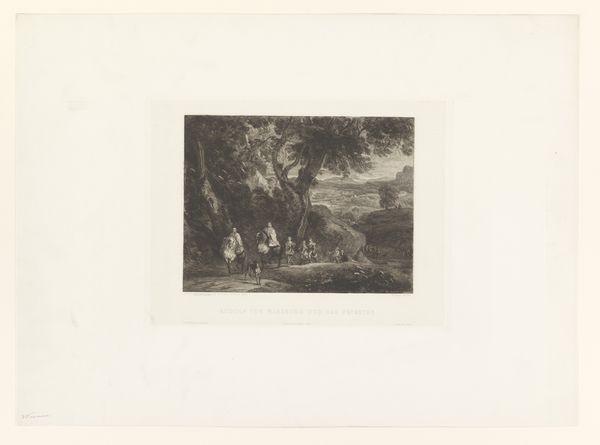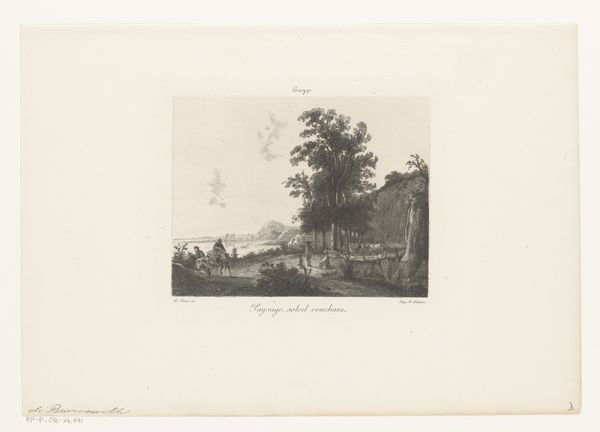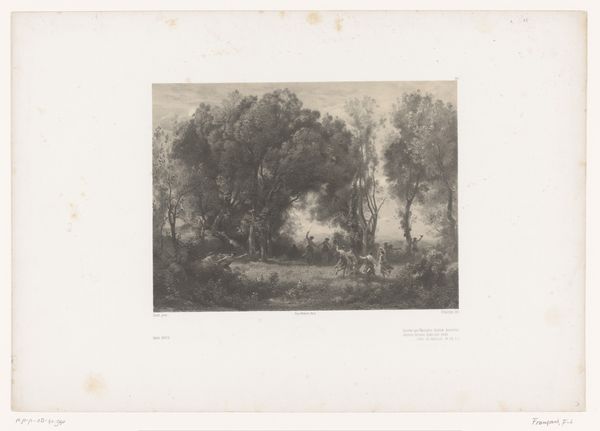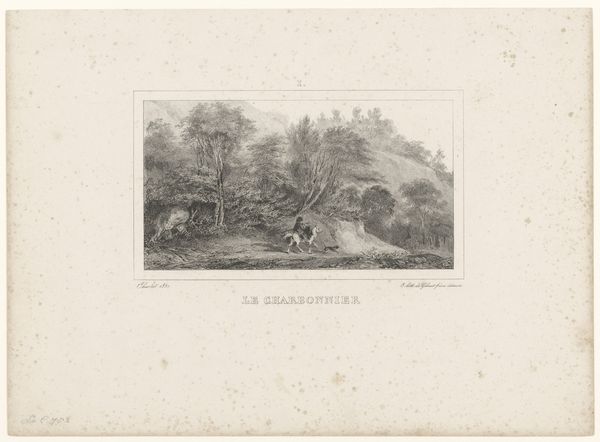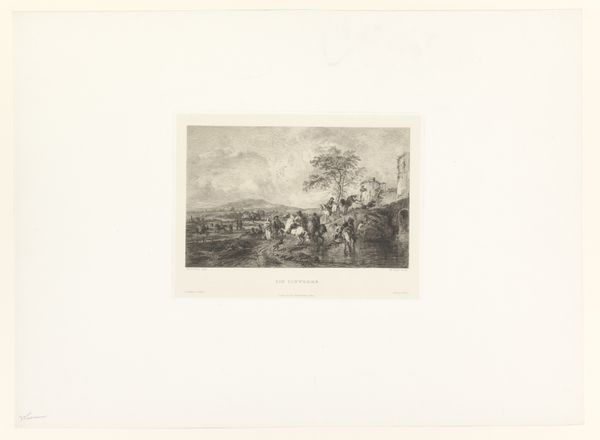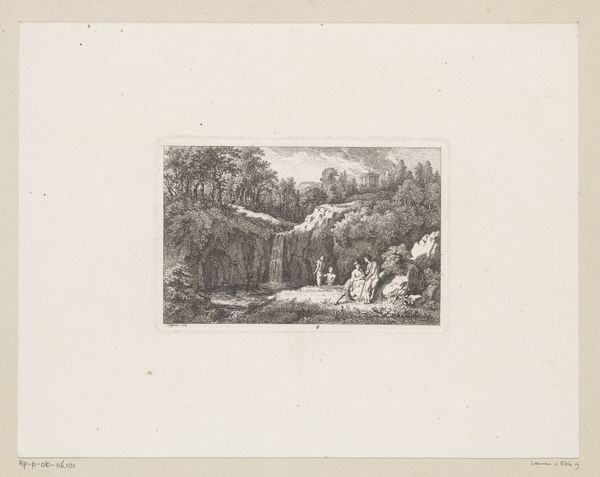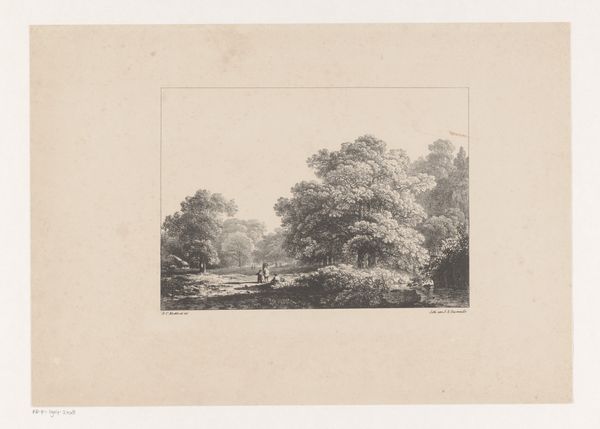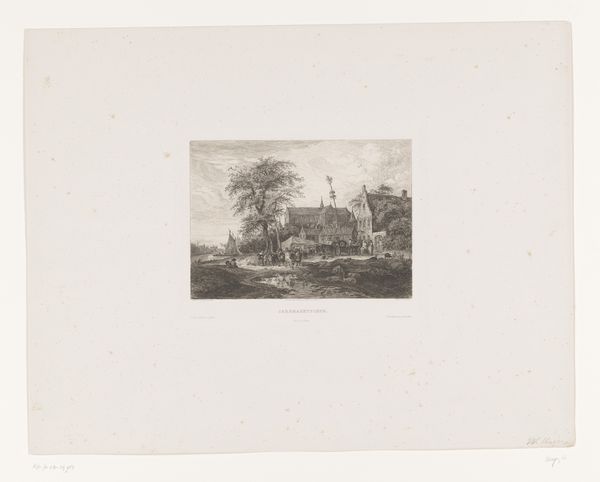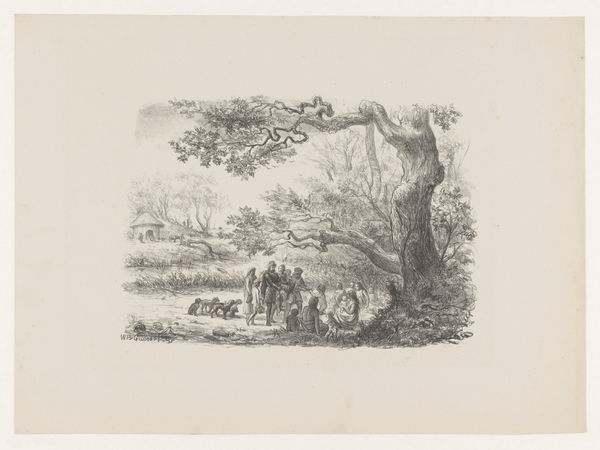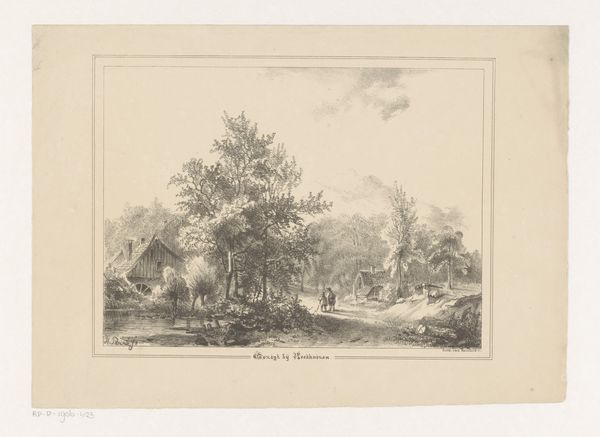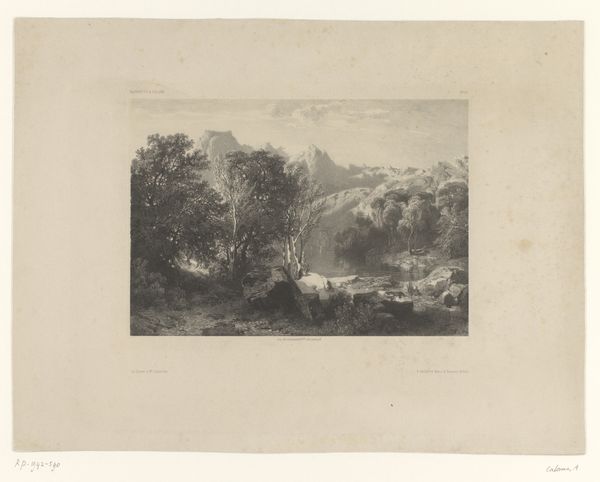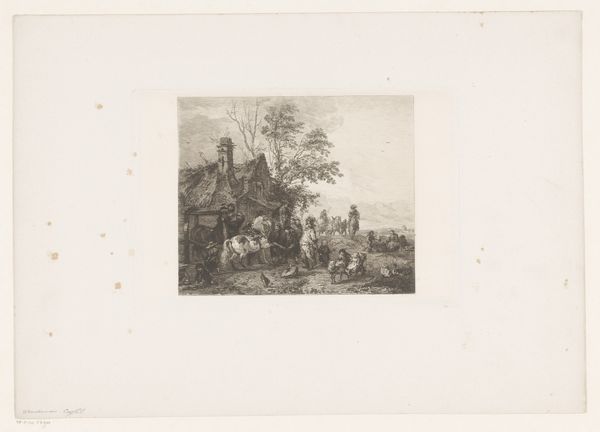
Dimensions: height 400 mm, width 501 mm
Copyright: Rijks Museum: Open Domain
Editor: This is "Rustend jachtgezelschap," or "Resting Hunting Party," an etching by Hendrik Adriaan Christiaan Dekker, made sometime between 1846 and 1889. It's incredibly detailed. What strikes me is the almost idyllic depiction of this hunting scene; the figures seem to be taking a leisurely break. What do you see in it? Curator: The seemingly tranquil scene belies the social realities of 19th-century hunting parties. Who got to participate in these leisurely hunts? For whom was nature a source of recreation, and for whom was it a means of survival? Consider the role of class; this wasn’t an activity open to all, was it? It reflects a specific socio-economic stratum's relationship to land ownership and privilege. Editor: I hadn't considered it that way. It's easy to get lost in the aesthetic, in the trees and the dogs, and forget the bigger picture. Were there contemporary critiques of this type of leisure? Curator: Absolutely. While Romanticism often idealized nature, simultaneously there were emerging socialist critiques questioning such displays of aristocratic privilege and their impact on labor and access to resources. Etchings like this can become flashpoints for broader discussions on land use, social equity, and the romanticized vs. the real. Look closely: who *isn’t* represented here? Where are the people who manage the land? Editor: This makes me reconsider the artwork's visual style too. That very soft focus might serve to sanitize what's really happening, who benefits from this hunting party. Curator: Precisely! So, perhaps instead of “resting,” this scene is passively enacting power structures of the era. Art provides an interesting lens through which we may analyze society and hierarchies. Editor: I see it so differently now. Thanks for making me think beyond just the surface appeal of the image!
Comments
No comments
Be the first to comment and join the conversation on the ultimate creative platform.

